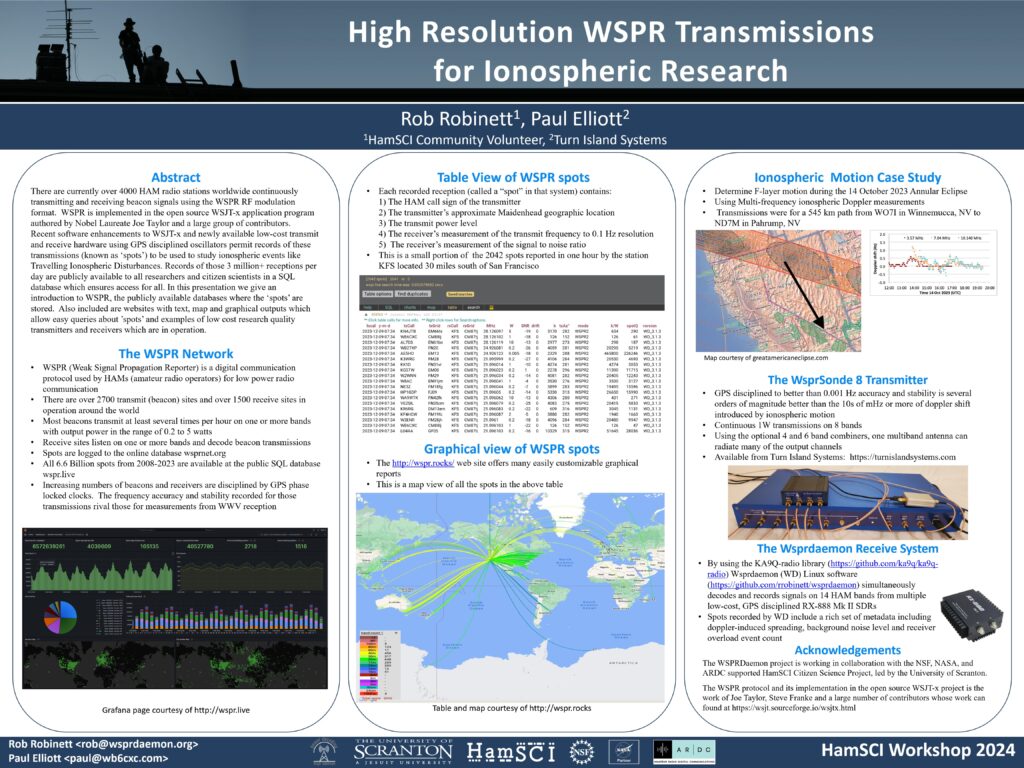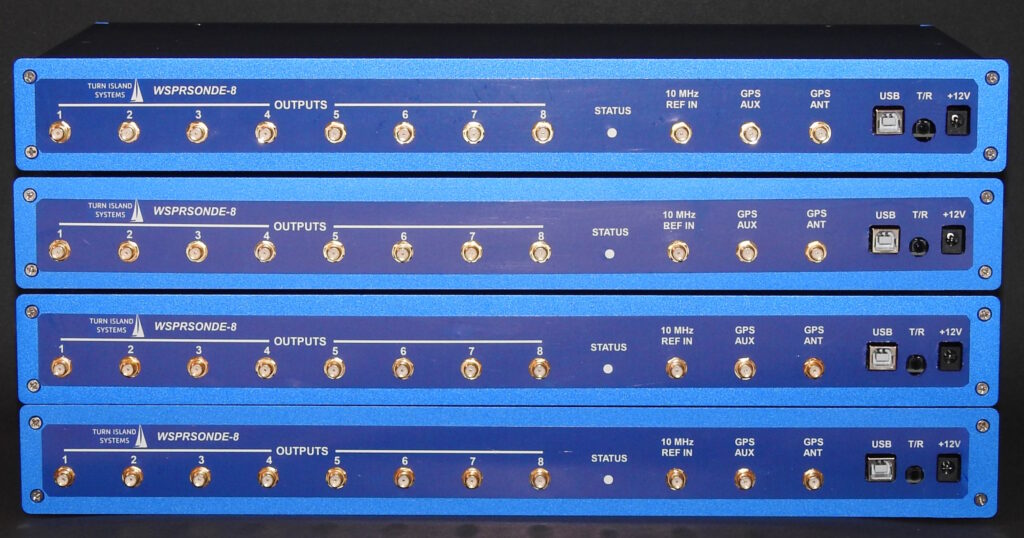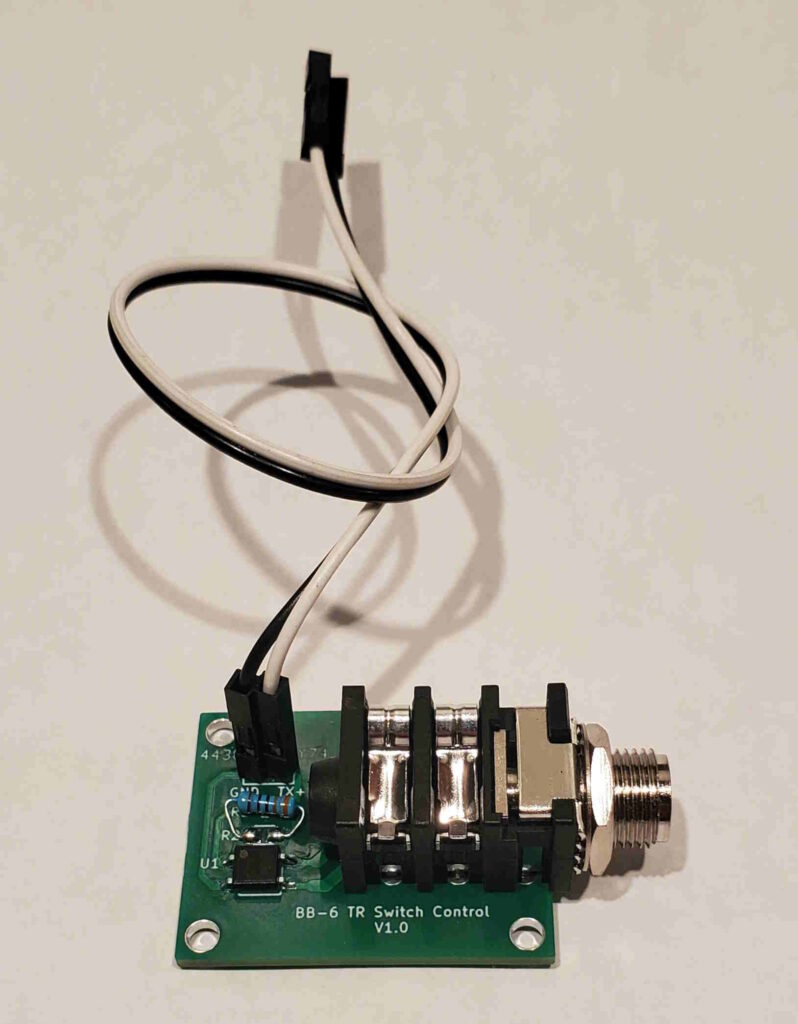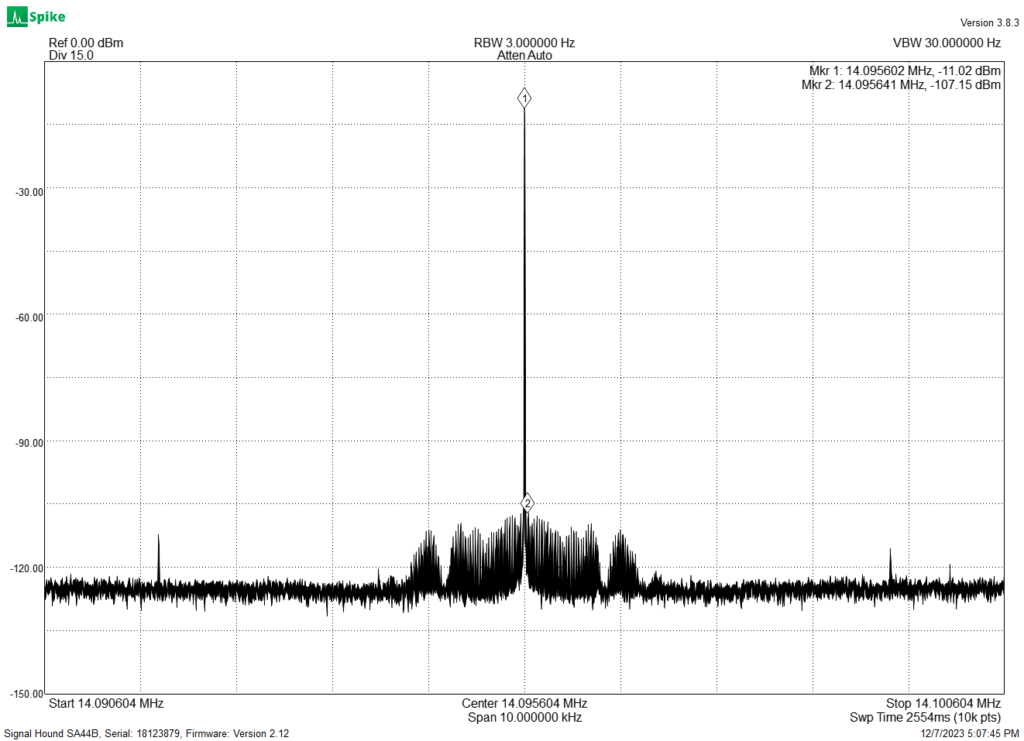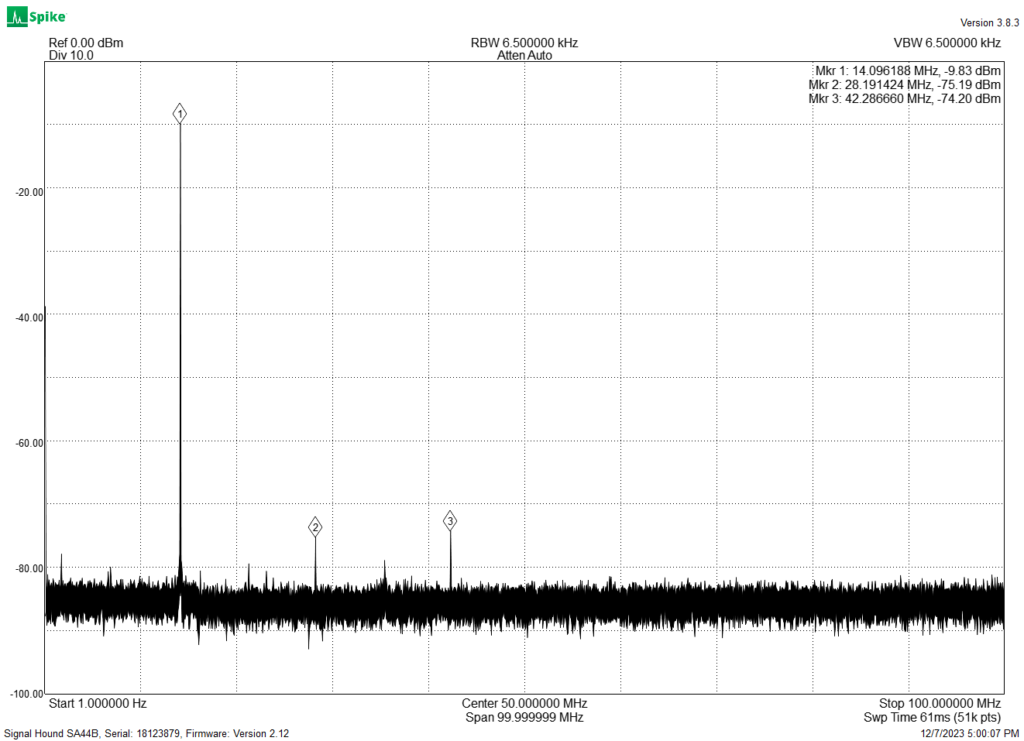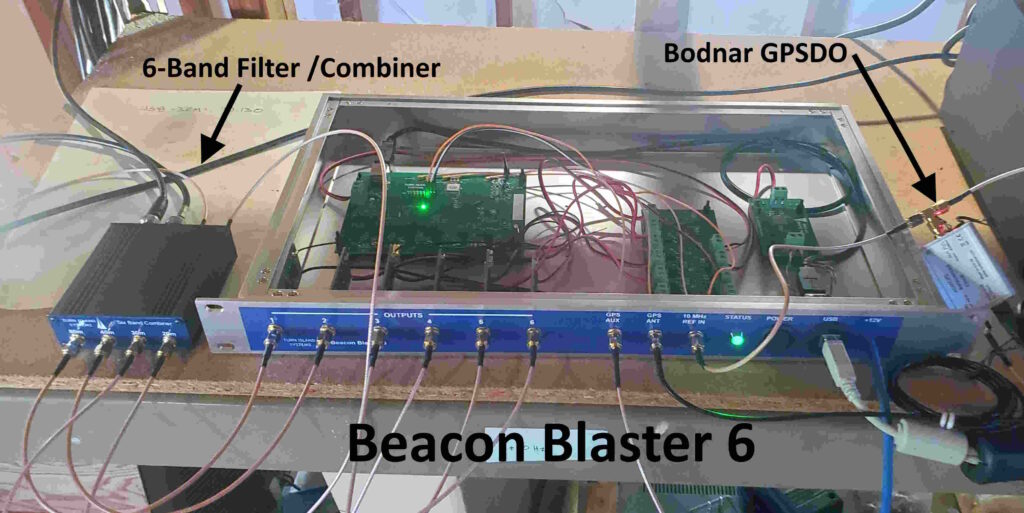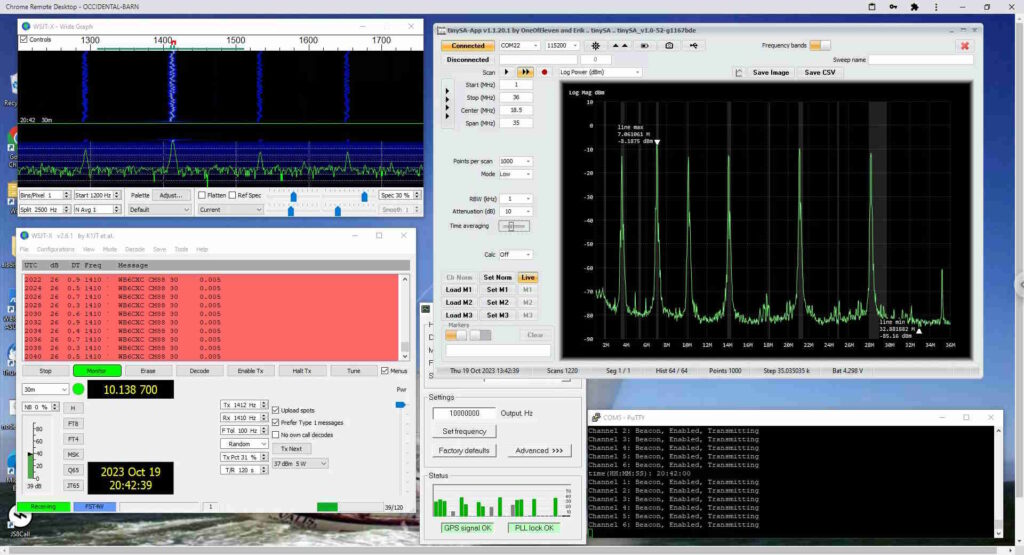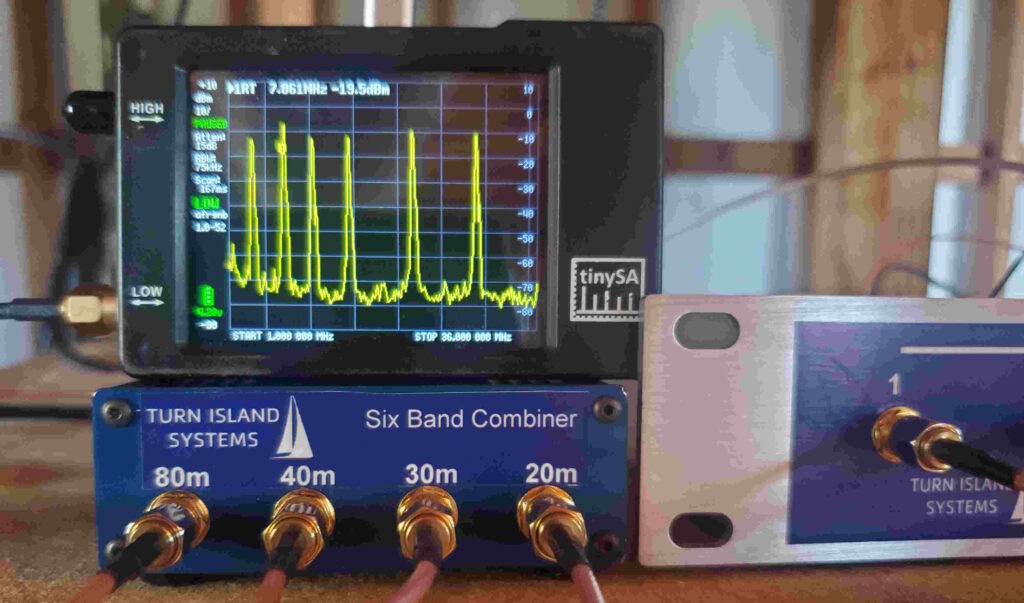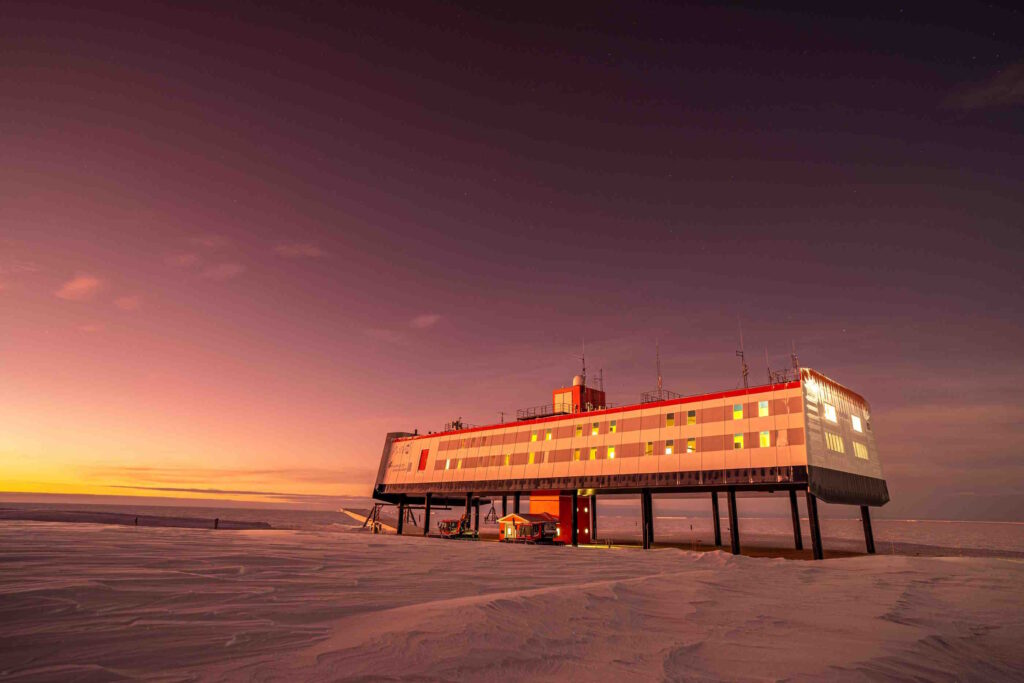As you may know, the powerful RX888 SDR receiver is truly a game-changer — especially when used in conjunction with ka9q-radio and wsprdaemon software. This combination provides full HF-band coverage and analysis — much more than I can go into here.
But to obtain the desired frequency accuracy and stability necessary for serious propagation analysis the RX888 does need an external 27 MHz reference clock. Fortunately, the receiver provides a small “U.FL” connector on the board, allowing easy interface to the clock circuitry. However, it’s not as simple as connecting the output of a GPSDO (typically a Bodnar, or the upcoming TAPR reference). The RX888 clock input does not provide a 50 Ohm termination, and requires an AC-coupled reference of around 1V P-P. What is needed at this interface is a DC-block, an attenuator, and a termination.
Rather than string together a bunch of little adaptors, we (Turn Island Systems and TAPR) have come up a single-board solution, as well as a replacement back-panel (so you don’t have to drill a hole in the existing panel for an SMA jack), and a short U.FL jumper cable.
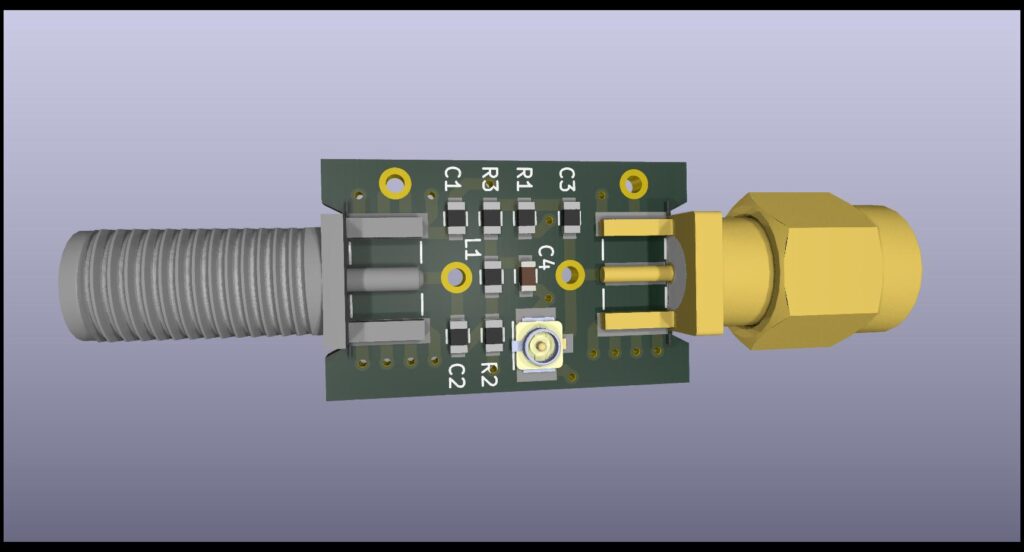
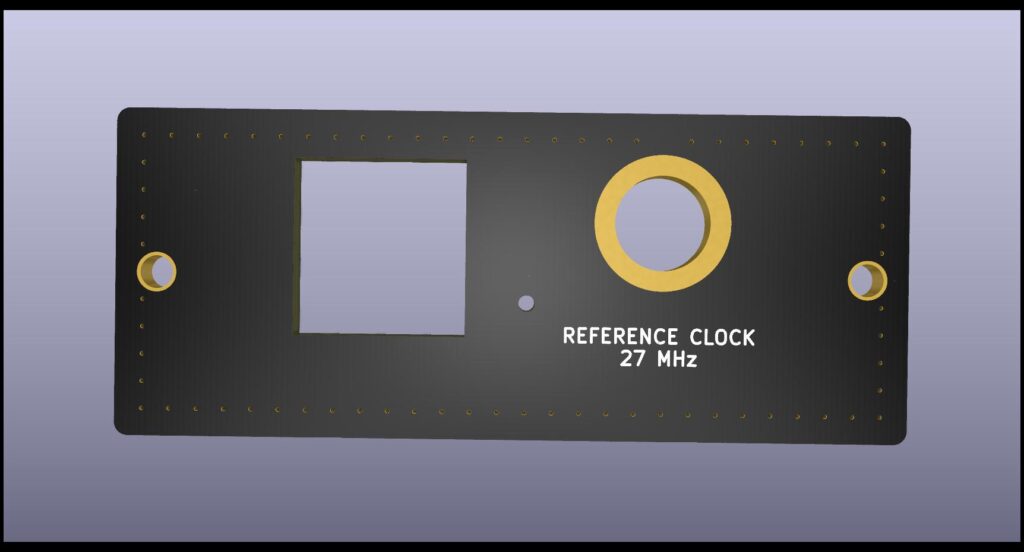
That SMA plug on the right-hand side of the adaptor is not installed for the “Inside the RX888” configuration, but the footprint is there so this board can be used as an external adaptor.
As you can see, the circuit is quite simple. Here’s the schematic:
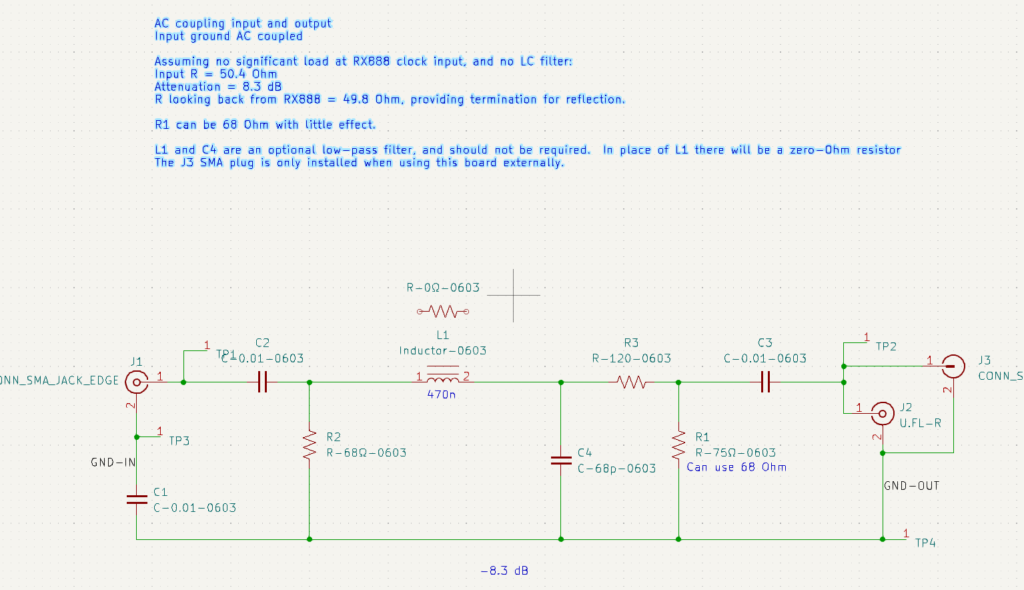
And it’s pretty easy to cobble together an interface board yourself. Here’s my first attempt, which has been in operation for about a month now. This one isn’t exactly the same (it’s missing one capacitor and the attenuator values are slightly different):
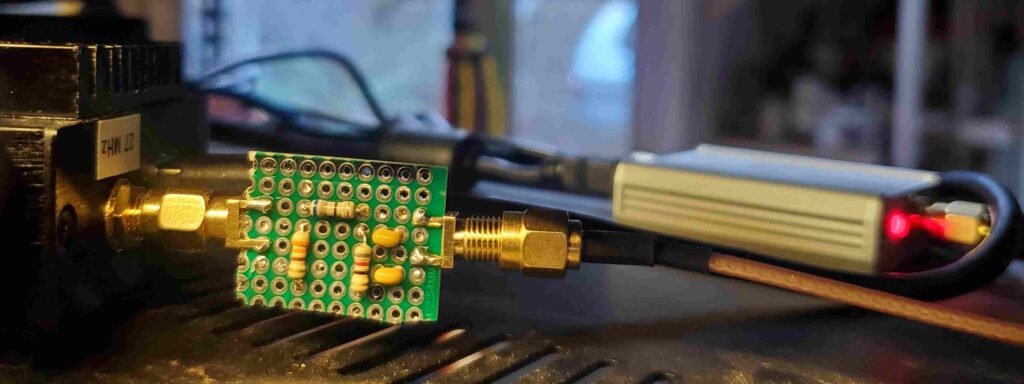
I usually do my prototyping with surface-mount components, but for old-times sake I decided to use my old stash of through-hole parts on this. I’m waiting for delivery of the assembled boards, but if all goes as planned these kits should be available by the end of April.
If you want to use off-the-shelf components to interface between a Bodnar GPSDO and the RX888, I recommend inserting a DC-block at the RX888 external clock jack, followed by a 10 dB attenuator (the links are to probably-OK parts, I haven’t tried these particular ones myself). The attenuator reduces the output of the Bodnar to a more appropriate level, and provides a “good enough” termination at the RX888. Since the board-end of the internal jumper cable is unterminated the 10dB attenuator only provides about 8 dB of attenuation, and this is fine. The attenuator also provides a compromise termination to both the cable from the GPSDO and to the internal jumper.
Here is a good description of the do-it-yourself external clock modification to the RX888: http://www.sonic.net/~n6gn/ExtClockMod.pdf
Note that since Glenn wrote this we have discovered that the coupling / DC-block capacitor is desirable. Also, Glenn has included a switch that allows you to enable/disable the RX888 internal clock. Many of us are not bothering with the switch, but just pulling the internal “enable” jumper clip.
And here is another excellent post from KA7OEI that discusses the RX888 External Clock issue in good detail: mk2.htmlhttps://ka7oei.blogspot.com/2024/03/using-external-clock-with-rx-888-mk2.html

